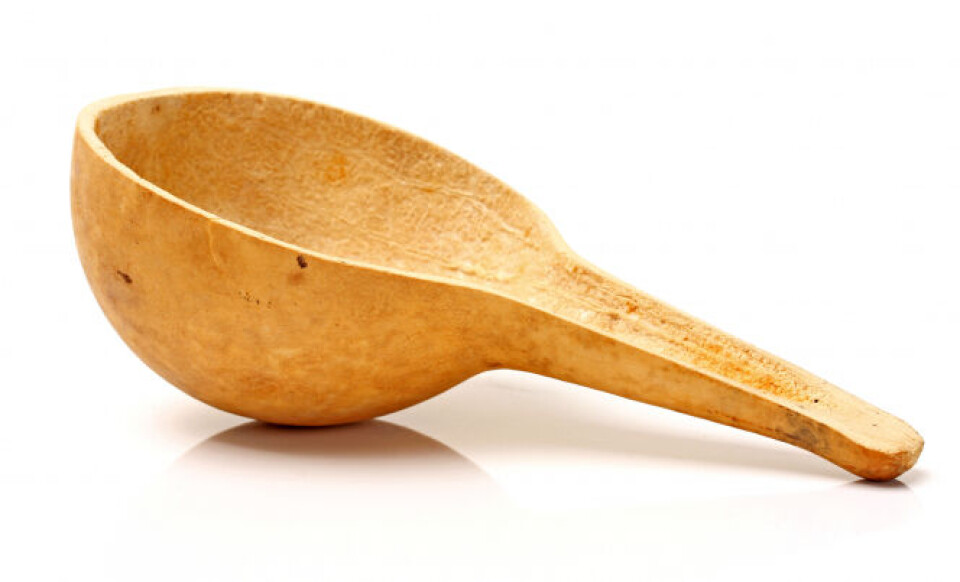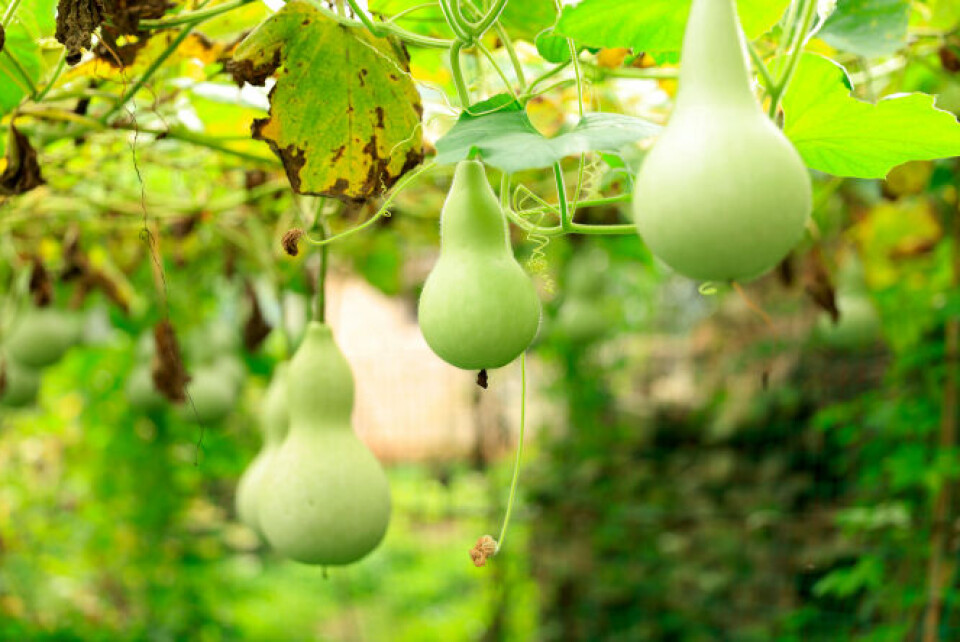-
Zinc rooftops of Paris find new life as artworks
Customers can take home a piece of the capital’s iconic UNESCO-listed skyline
-
Unpublished drawing by Michelangelo pupil discovered in western France
Artwork valued at €500,000 but sold for €3.1 million at Paris auction
-
Roadside sculptures: France's motorway art
Explore the history of the 1% artistique scheme that publicly funds artworks
Good gourd! French artist turns dried fruit into art
David Thille was hooked when he discovered the hard-shell gourds can be dried and fashioned into implements such as bowls and spoons, or decorated to make ornaments

David Thille is the face of a craft that most people have never even heard of.
He is France’s only known professional cougourdonnier, a job that consists of creating ornaments, implements and other artisanal objects from hard-shell gourds.
His workshop is near Saumur (Maine-et-Loire), and Mr Thille fashions everything from lamps to ladles, which he sells via his websites.
‘I did not discover a craft, I discovered a material’
“I did not discover a craft, I discovered a material,” Mr Thille insists when pressed about the inspiration for his passion.
It all started in the 1990s in San Cristóbal de Las Casas, a town in the southern Mexican state of Chiapas, near the Guatemalan border, where Mr Thille lived for a year to learn carpentry from a local specialist.
While he was there, he would regularly eat lunch in the market and was struck by the curious-looking bowls that people used to eat from.
“They looked like they were made of wood.

People told me it was the fruit of a tree, but I didn’t know what it was.”
It was only several years later, when he attended a festival in Marchiennes (Hauts-de-France) and spotted similar objects being sold on the stalls there, that he realised the fruit was probably a gourd.
Learned that it grew in France
What is more, he learned that it grew in France.

Still, it took him another four to five years before he decided to start his own business and set up a website.
At this point, he was still not even aware that cougourdonnier existed as a craft.
Rather, the idea developed after visiting the United States for two months, particularly after seeing the vibrant craft scene centred around a place called Welburn Gourd Farm in California, the premier source for quality organic hard-shell gourds, tools, supplies, colours and finishes.
“I realised that there were festivals and lots of people working on this as a craft,” says Mr Thille.

‘Potential to create a viable livelihood’
“There was the potential to create a viable livelihood, including training and offering activities for children.”
Working with gourds is a year-round process starting in May, when they are planted.
They are harvested around late October or early November – a month to a month-and-a-half later than other plants in the same family, such as pumpkins and squash – and left to dry until the following May.
During this time, between 20% and 70% of gourds will rot or break.
Can last for 8,000 years
However, those that survive will last for anything from a month to 8,000 years, as in the case of the oldest gourds discovered in Peru.
‘La Case à Gourdes’ is Mr Thille’s main website where he lists most of his wares, such as lamps, but more artistic pieces feature on a second platform, called ‘Le Gosse Créations’.
Some lamps take him just an hour to make, others up to four days, he says.
“And there are even other projects where it will take me six months. It depends on the type of creation.”
While 95% of his work is currently craft objects, he hopes to move towards more artwork in future.
18 years in the industry
He has been in the industry for 18 years now, but Mr Thille says the craft is still little known.
One reason might be to do with semantics.
“You always end up in a conversation where people think that the gourde [the French for ‘flask’] is the object from which you drink.
Yes, it is, but only because it took its name from the fruit from which it was made,” says Mr Thille.
Most French people are equally unaware of the craft’s long history.
Gourd flasks were given to Corsican shepherds and Napoleonic armies alike before industrialisation and the invention of plastic bottles saw their sharp decline.
Gourds once ubiquitous
Gourds were once so ubiquitous that their shape, round like a head, inspired two popular expressions to describe someone who is a little simple: n’avoir rien dans la calebasse and tu n’es qu’une gourde.
In fact, a calebasse (calabash) grows only in tropical regions, whereas gourdes can grow in more temperate climes, such as in Greece, France or Poland.
French people tend to use the word calebasse wrongly to describe a gourde – mainly, suspects Mr Thille, because gourde is almost only associated with the expression nowadays.
He uses the terms interchangeably on his website to give more visibility to his business, but it is still a struggle to make a living from the craft.
“To make a proper income, you either have to work 24 hours a day or raise your prices by half.
“There was a time when I did 30 shows a year. Now I do 10,” he says.
“The people who can afford to do this are usually women with working husbands or retirees.”
Despite making extra cash himself by offering training courses, he fears the craft of cougourdonnier is “almost mission impossible”.
Related articles
Whacky waste of money or community voice - roundabout art in France
























